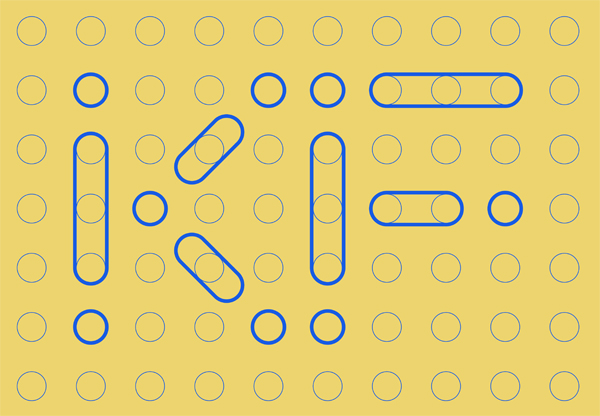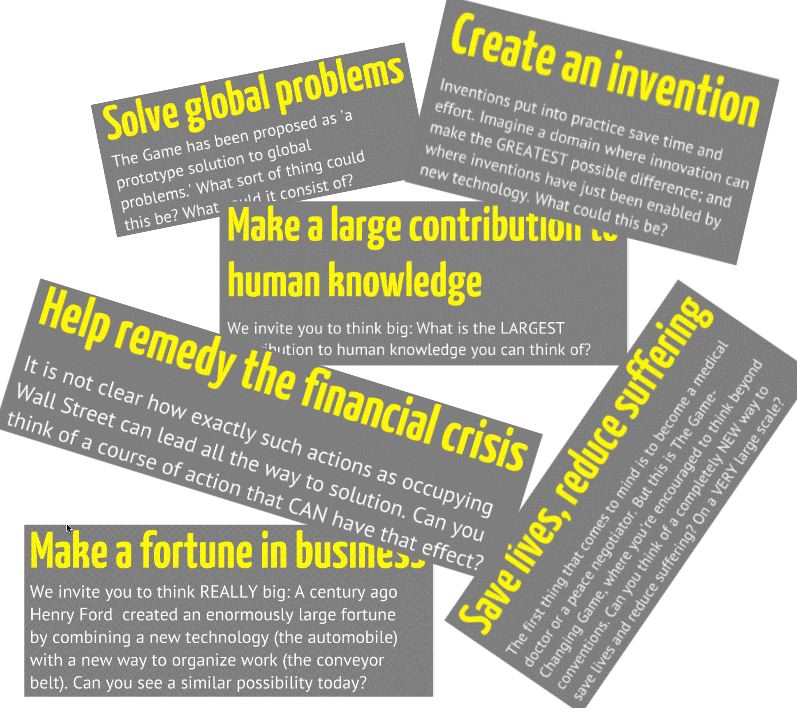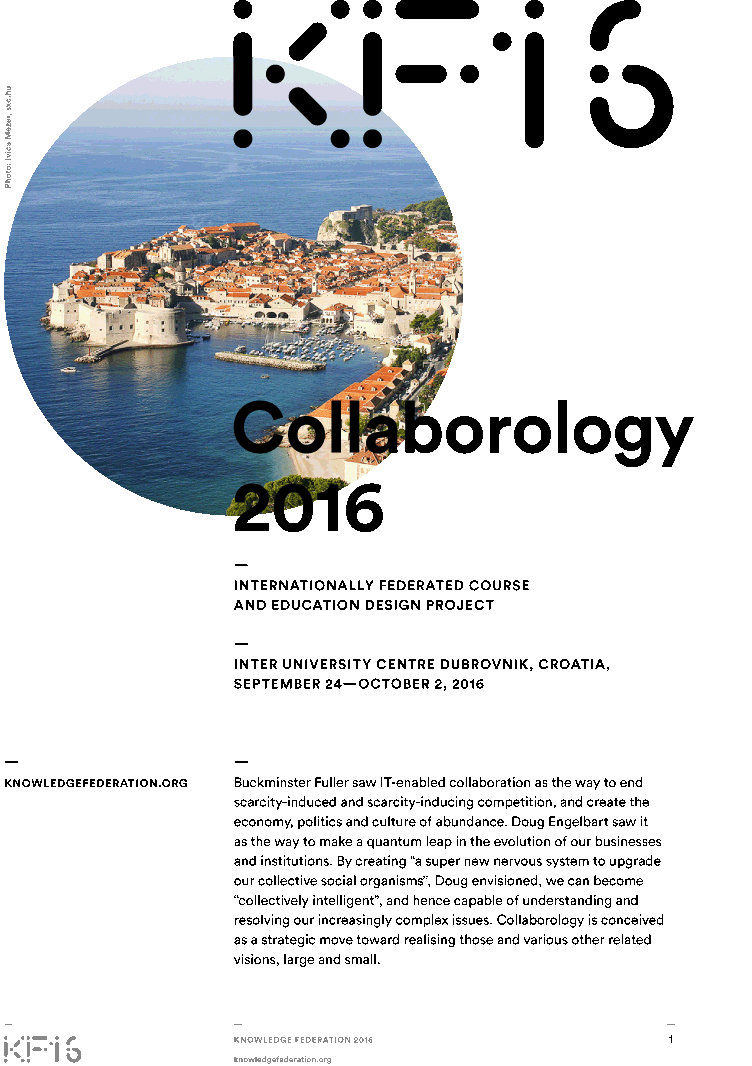Difference between revisions of "APPLICATIONS"
m |
m |
||
| Line 43: | Line 43: | ||
<div class="col-md-3"><font size="+1">Our public informing <em><b>prototype</b></em> showed how to restore vision to democracy.</font> | <div class="col-md-3"><font size="+1">Our public informing <em><b>prototype</b></em> showed how to restore vision to democracy.</font> | ||
</div> | </div> | ||
| − | <div class="col-md-7"><p> | + | <div class="col-md-7"><p>If you've followed the line of thought in Federation through Keywords, you'll easily comprehend why <em><b>systemic</b></em> (or "scientific") comprehension of issues and remedial action are not only necessary for resolving "the huge problems now confronting us"—but indeed the inception of a whole new way of evolving culturally and socially; capable of bringing us to the heights that are now well beyond what most of us are ready to believe. And that's exactly what the public informing <em><b>prototype</b></em> we crafted in 2011 in Barcelona enables.</p> |
| − | + | <p>The <em><b>system</b></em> of public informing we envisioned as two loops forming the number 8 (or you may think of it as two links in a chain, joining the material world where problems are uncovered, and the (academic) world of ideas where the underlying <em><b>systemic</b></em> causes are comprehended and remedial steps are proposed. The lower loop identifies and curates <em>problems</em> (the people are empowered to do this <em>directly</em>; we built this <em><b>prototype</b></em> on the pre-existing Barcelona's WikiDiario citizen journalism project); and where the upper loop identifies (by engaging academic and other experts) and communicates (through the agency of <em><b>knowledge federation</b></em>'s communication design team) their <em><b>systemic</b></em> solutions. How else shall we ever jointly <em><b>know</b></em>, I explained in the <em>Liberation</em> book, that "corporate personhood" for instance might be an issue?</p> | |
| − | + | <p>Our Barcelona prototype prototyped also a <em><b>system</b></em> by which journalism could be created and perpetually re-created.</p> | |
| − | |||
| − | |||
| − | |||
| − | |||
| − | <p>The <em><b>system</b></em> of public informing we envisioned as two loops forming the number 8 | ||
| − | <p>Our Barcelona prototype prototyped also a system by which journalism could be created and perpetually re-created.</p> | ||
<p>[[File:BCN2011.jpg]] <br><small><center>Paddy Coulter, Mei Lin Fung and David Price speaking at our workshop "An Innovation Ecosystem for Good Journalism" in 2011 in Barcelona.</center></small></p> | <p>[[File:BCN2011.jpg]] <br><small><center>Paddy Coulter, Mei Lin Fung and David Price speaking at our workshop "An Innovation Ecosystem for Good Journalism" in 2011 in Barcelona.</center></small></p> | ||
<p>We were fortunate to have with us Paddy Coulter (director of Oxford Global Media and former director of Oxford University Reuters School of Journalism); who had also been a keynoter at our formative 2010 workshop in Dubrovnik. In the manner of giving the good journalism tradition the reigns, we asked Paddy to chair the Barcelona event. </p> | <p>We were fortunate to have with us Paddy Coulter (director of Oxford Global Media and former director of Oxford University Reuters School of Journalism); who had also been a keynoter at our formative 2010 workshop in Dubrovnik. In the manner of giving the good journalism tradition the reigns, we asked Paddy to chair the Barcelona event. </p> | ||
Revision as of 16:02, 4 December 2023
Contents
Federation through Prototypes
(Alexander Laszlo, motto and call to action at the International Society for the Systems Sciences 57th yearly conference in Haiphong, 2013)
The hologopia initiative turns even "the huge problems now confronting us" into assets! Because—once the light to illuminate the nature of our situation has been turn on—they compel us to make an evolutionary quantum leap; by make the sort of changes and improvements that the liberated and informed mind anyhow demands of us; which the five points point to.
To be culpable of geocide—the cruelest massive crime in human history, which may bring us to the end of that history—all we need to do is—do nothing; to stay put and "do our job" in our systems as they have become.
The "great cultural revival", this new journey of a thousand miles too will need to begin with the proverbial single step; by which we'll no longer be part of the problem—but become part of the solution; which is to be the systems we want to see in the world—instead of only talking or writing about what must be done. Doug Engelbart called this step bootstrapping; and left it to us, to knowledge federation's next generation as a challenge.
It is therefore most significant that less than two weeks after Engelbart died in 2013, feeling that he had failed, Alexander Laszlo—my friend and knowledge federation colleague and veteran—initiated the first systemic self-organization in an academic community, at the 57th annual conference of the International Society for the Systems Sciences, which he organized as the society's president. It was there that Alexander and first met physically; in Haiphong, "collective intelligence" and Engelbart's name were on everyone's lips.
“The tie between information and action has been severed", Neil Postman warned in his 1990 keynote "Informing Ourselves to Death" to German computer scientists; "we are glutted with information, drowning in information, have no control over it, don’t know what to do with it." Postman's call to action was to see the information technology, and their work, in a larger humanistic perspective; to see it in a larger picture; because as the things are now—the creators of the world's most powerful technology give it to commercial actors, to power structure; and it remains to social scientists to only diagnose the problems as they develop.
We restore the severed tie between information and action by creating prototypes.
Prototypes are the characteristics products of knowledge federation—as academic books and articles are the characteristic products of the traditional academic work. When we see ourselves as (parts of) society's 'headlights'—we are empowered to self-organize differently, as this all-important pivotal function requires.
A prototype is
- a model, functioning in reality, exhibiting a collection of challenge–solution pairs, or design patterns as we are calling them; and showing how to combine those design patterns in a coherently functioning whole
- an intervention, strategically designed to alter certain conventional practice or system
- an experiment, showing what in the proposed design works well, and what needs to be improved.
A prototype is not complete unless it has a clear and realistic impact model and a deployment plan.
In knowledge
The knowledge federation prototype is conceived as society's evolutionary organ.
I offer knowledge federation as (a prototype of) the strategically first system our self-organization or bootstrapping efforts need to be focused on; which will organize us and empower us to create both the guiding-light knowledge and the systemic innovation as praxis.

Knowledge federation was created in 2008, at the Inter University Center Dubrovnik, by a small group of knowledge media researchers and developers; who had realized that our work had matured to the point where we were creating (no longer only enabling technology, but also) systems that were "collectively intelligent" and have other desirable properties too. We readily saw that the technology that we and our colleagues were developing had the potential to revolutionize systems; and that to realize this potential—we would need to self-organize differently. At second, biennial workshop at the IUC Dubrovnik, in 2010, whose title was "Self-Organizing Collective Mind", we invited a couple of dozen hand-picked experts who would together represent the suitable and sufficiently complete mix of expertise; and we invited them to self-organize and form a transdiscipline.
At our first international workshop, at Stanford University in 2011, within the Triple Helix IX international conference, we announced systemic innovation as an emerging and necessary trend in innovation; and (the systemic structure prototyped by) knowledge federation as its systemic enabler.
Here is how we work: A prototype of a system is created, and a transdiscipline around it—to update it and give it real-life impact; according to the state-of-the-art disciplinary and other insights that everyone brings along. Knowledge federation creates the transdiscipline by creating itself.
Today the knowledge federation prototype is a complete prototype of the transdiscipline conceived in terms of about forty smaller prototypes; which models new ways to implement all those various parts and functions that constitute a discipline—ranging from epistemology and methodology to a community of state-of-the-art experts and examples of application.
In information
If you've followed the line of thought in Federation through Keywords, you'll easily comprehend why systemic (or "scientific") comprehension of issues and remedial action are not only necessary for resolving "the huge problems now confronting us"—but indeed the inception of a whole new way of evolving culturally and socially; capable of bringing us to the heights that are now well beyond what most of us are ready to believe. And that's exactly what the public informing prototype we crafted in 2011 in Barcelona enables.
The system of public informing we envisioned as two loops forming the number 8 (or you may think of it as two links in a chain, joining the material world where problems are uncovered, and the (academic) world of ideas where the underlying systemic causes are comprehended and remedial steps are proposed. The lower loop identifies and curates problems (the people are empowered to do this directly; we built this prototype on the pre-existing Barcelona's WikiDiario citizen journalism project); and where the upper loop identifies (by engaging academic and other experts) and communicates (through the agency of knowledge federation's communication design team) their systemic solutions. How else shall we ever jointly know, I explained in the Liberation book, that "corporate personhood" for instance might be an issue?
Our Barcelona prototype prototyped also a system by which journalism could be created and perpetually re-created.

We were fortunate to have with us Paddy Coulter (director of Oxford Global Media and former director of Oxford University Reuters School of Journalism); who had also been a keynoter at our formative 2010 workshop in Dubrovnik. In the manner of giving the good journalism tradition the reigns, we asked Paddy to chair the Barcelona event.
We techies should not allow ourselves to reinvent journalism.
Our task was to facilitate its evolution—by federating transformative memes. In Barcelona workshop Mei Lin Fung (founder of the Silicon Valley-based initiative to continue and complete Doug Engelbart's vision called Program for the Future) represented the Doug Engelbart legacy; David Price (co-founder of Debategraph as the leading collective mind initiative, and of Global Sensemaking as the global community of collective mind researchers and developers) led the technology team.
In empowerment
As an experiment, the prototype we crafted in Barcelona gave us an invaluable insight: When the journalists who co-created it with us returned to their busy editorial desks—they were out of sight! This helped us realize that the people who have power positions within a system will not be the one who can change that system; they are too busy running it!

A system that can change systems must be conceived differently!
And so the following year, at our 2012 Palo Alto workshop, we crafted a prototype of a system called the game-changing game; and presented it at the Bay Area Future Salon.
The game-changing game is not a game in ordinary sense, but a game-changing way to have a career; where instead of playing by the rules, instead of trying to fit in an existing profession or system—the players undertake to change a system. The game-changing game has two categories of players: The A-players (who as graduate students, or entrepreneurs in search of a project) are in a career and life phase where change is natural and easy; and the Z-players (who as professors, or investors) are in positions of power.
The Z-players play the game-changing game by empowering the A-players to pursue their career goals by changing a system.
In 2012 in Zagreb we created the club of Zagreb—a redesign of The Club of Rome based on the game-changing game.
In education
A natural way to change course is by changing education.
Which recreates the world with every new generation; unless, of course, it's conceived as a way to pull "the world" over their eyes; and press them into the mold of our already obsolete systems and professions.
The collaborology prototype models the education we now need.
And organizes us in creating or federating such education.

Here too I'll only mention two of its design patterns.
In the collaborology prototype education is by pull, not push.
Which translates into a whole spectrum of advantages—by developing creativity, and collaboration ethics and skills, and other personality traits that are so much in need; and by enabling education to be life-long and need or interest-based
The collaborology course is internationally federated.
By enabling—through suitable use of new technology—everyone in the world to participate in the course as (both!) students and instructors. Which translates into another spectrum of advantages—including that it enables (provides a sustainable business model for) the creation of a (new) transdiscipline; and engenders the economies of scale that are characteristic of systemic innovation (instead of teaching the whole course, each instructor is responsible only for a single module).

